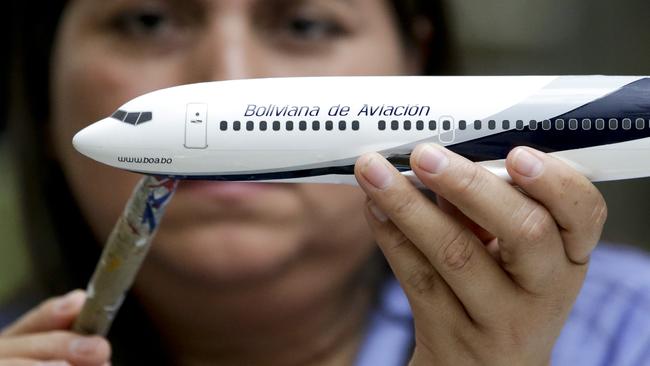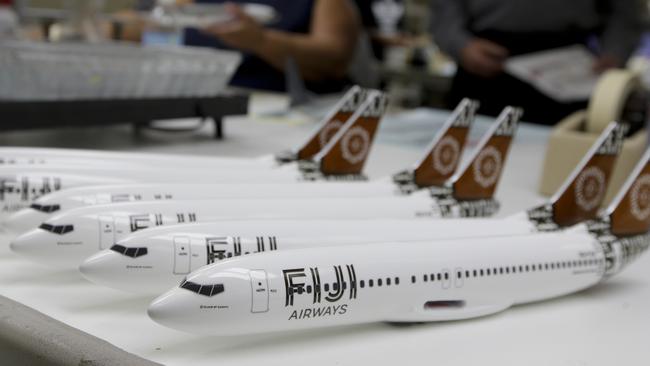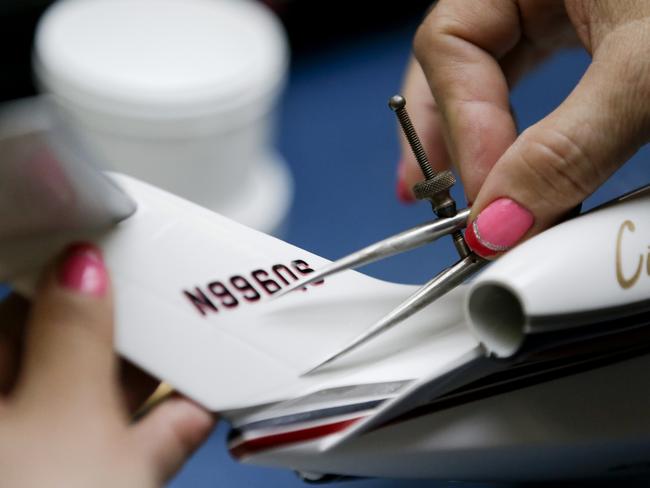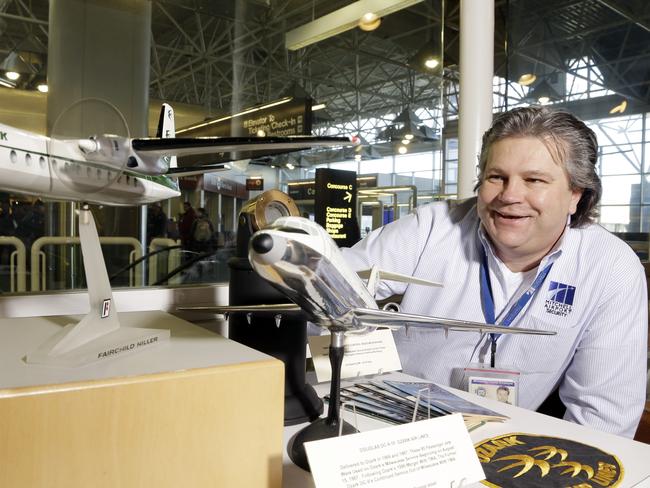How airplane models are helping business deals get off the ground
YOU may remember getting a model airplane as a kid. But in the business world, these miniatures play a much bigger role than you would think.

IN MANY parts of the world, business people shake hands. In Japan, they bow. But all over the world airline executives engage in a greeting that is all their own: the exchange of model airplanes.
When airlines start flying to new cities, make deals with other carriers or finance new jets, these high-quality models — typically one to two feet long — provide the perfect photo backdrop, can help break the ice or serve as a cherished “thank you.”
While a business card might be quickly stuffed away in some desk drawer, models remain prominently displayed on the desk of politicians and industry powerbrokers. Puerto Rico’s governor, Alejandro Garca-Padilla, has models from JetBlue, Lufthansa, Avianca and local airline Seaborne in his office. Each has established or expanded service to the island since his 2013 inauguration.
“It’s one of these gifts that people get and don’t put in the closet,” says Jeff Knittel, who oversees aircraft leasing for financier CIT Group Inc.

European aircraft manufacturer Airbus took in 1,456 passenger plane orders from 67 airlines around the world last year. It also placed 30,000 of its own orders — for model Airbus jets.
Multi-million dollar plane purchases are decided on the fuel efficiency of a jet, its maintenance costs, how much cargo it holds and how far it can fly. However, desktop models help start the conversation, says Chris Jones, vice president of North American sales for Airbus.
“Putting a model on the table won’t sway a deal but it might get their attention,” Jones says. After the sales pitch, the model is left behind for the most-senior person. “It’s a little bit of a teaser.”
The tradition of exchanging model planes has been around for decades. Walk through the headquarters of any airline and rows of models — including those of competitors — can be spotted.
Gerry Laderman, senior vice president of finance and procurement at United Airlines has collected his fair share after 30 years in the business. There’s no room left in his Chicago office, so new acquisitions are displayed on the hallway windowsill.
“I stopped counting after 100,” Laderman says. “My wife doesn’t let me bring home models anymore.”
Model planes have their roots with aerospace engineers, who used them in an age before computers to design planes and then test them in wind tunnels.
Then in 1946, two workers from the Douglas Aircraft Co. started Pacific Miniatures with the encouragement of the aircraft manufacturer. It was right after World War II and Douglas faced a major challenge in getting nervous travellers to fly.

“They were tasked with promoting the romance and luxury of air travel,” says Fred Ouweleen, Jr., current owner of the company affectionately known as PacMin.
The company, based in Fullerton, California, created large cutaway models that showed aircraft interiors to a public that had — for the most part — never stepped foot on a plane. Those models would become a mainstay of travel agencies for decades.
Soon there was demand for smaller models that could fit on people’s desks and bookshelves. Today it is those handpainted models, scaled to one hundredth of the size of a jet, that PacMin is best known for.
“In the case of a fire, I think those would be the first things grabbed and taken out of the building,” Ouweleen says.
PacMin produces the planes for more than 4,000 customers around the world with the typical order just being a handful of planes. “A large order for us is 100,” Ouweleen says. Still, more than 15,000 models are sold a year ranging in price from $130 to $1,500 each, depending on the size, speed and difficulty of the order.
Privately-held PacMin employs 165 people and sees $10 million in annual sales.
Members of the public generally can’t buy PacMin models, although plenty end up on eBay, with sellers generally asking $200 to $400.

Mark Jung estimates he has spent $45,000 buying model planes over the past 45 years. He now has more than 1,000. A few are PacMins but many are more affordable models made by competitor Gemini.
Jung, a former airline worker, now processes badges at Milwaukee, Wisconsin’s main airport. Every employee — those who work in stores, restaurants or for the airlines — must pass through his office to get their credentials.
During his 10 years there, many airlines have thanked him with a model. There are now more than 100 in the office; others are displayed at the airport’s museum. (As a public employee, Jung can’t accept gifts; he just holds onto the models on behalf of the airport.)
Airline executives sit in his office, see the row of planes and ask: “Where’s ours?” A model arrives shortly after.
“It’s a really great icebreaker,” Jung says, adding that he tries to avoid making the badging process feel like a trip to the department of motor vehicles.
Even those in charge of a fleet of real jets like to collect the models.
JetBlue CEO Robin Hayes has 15 models in his office and dozens more on nearby shelves. They include an Airbus A330 that a sales representative for the aircraft maker once gave him. That particular jet isn’t in JetBlue’s fleet — yet — but the model remains in his office.
“Some people like going to a museum and looking at art. Some people like a nice bottle of wine,” Hayes says. “I like nice model airplanes.”



